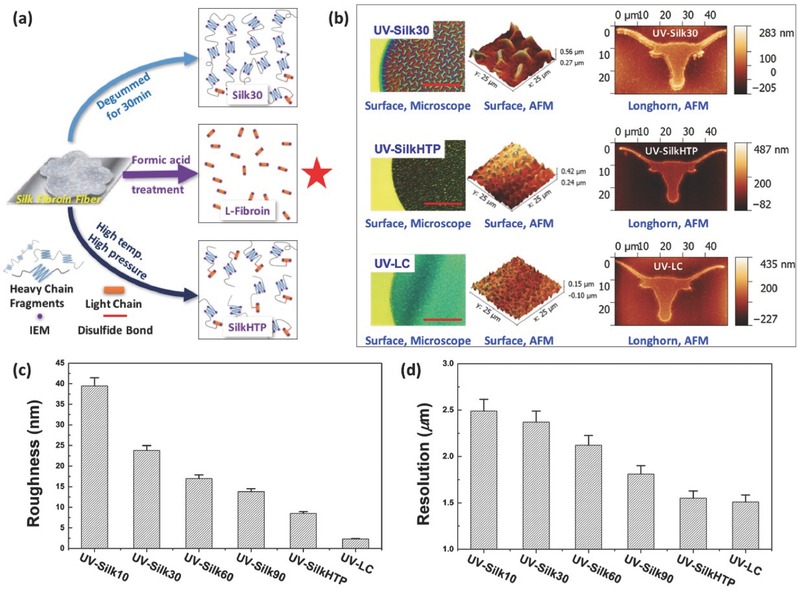Figure 2.

Characterization and analysis of patterns fabricated by protein photolithography using different types of silk‐based materials (e.g., UV–Silk30, UV–SilkHTP, and UV–LC). a) Schematic comparison between structures of UV–LC and UV–Silk (including both UV–Silk30 and UV–SilkHTP) precursor, where UV–Silk30 has longer protein chains than UV–HTP. UV–LC contains only l‐fibroin; b) morphological characterization (using an optical microscope and AFM, scale bar: 200 µm) of micropatterns fabricated by protein photolithography using UV–Silk30, UV–SilkHTP, and UV–LC. It shows that the UV–LC can achieve better resolution and surface smoothness than UV–Silk30 and UV–SilkHTP; c,d) quantitative analysis of resolution and surface roughness of micropatterns fabricated using various UV–Silk and UV–LC. The result is consistent with the observations from optical and AFM images.
